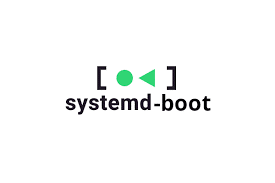-
- Diagnosing systemd-boot (systemd-bootloader) Configuration Issues in Linux
- Understanding systemd-boot
- Common Configuration Issues
- Configuration Steps for Diagnosing Issues
- Step 1: Verify UEFI Firmware Settings
- Step 2: Check the EFI Partition
- Step 3: Review loader.conf
- Step 4: Check Boot Entry Files
- Step 5: Update the Bootloader
- Practical Examples
- Best Practices for systemd-boot Configuration
- Conclusion
Diagnosing systemd-boot (systemd-bootloader) Configuration Issues in Linux
In the world of Linux, bootloaders play a crucial role in the system’s startup process. Among them, systemd-boot stands out for its simplicity and integration with the systemd ecosystem. However, like any software, configuration issues can arise, leading to boot failures or unexpected behavior. This guide aims to provide a comprehensive approach to diagnosing and resolving systemd-boot configuration issues, ensuring a smooth boot process for your Linux system.
Understanding systemd-boot
systemd-boot is a lightweight UEFI boot manager that is part of the systemd suite. It is designed to be simple and efficient, making it an excellent choice for modern Linux distributions that support UEFI. Understanding its configuration is essential for troubleshooting any issues that may arise.
Common Configuration Issues
Before diving into the diagnostic steps, it’s important to recognize some common configuration issues that users may encounter:
- Incorrect boot entry paths
- Missing or misconfigured kernel parameters
- Corrupted or missing EFI files
- Improperly set UEFI firmware settings
Configuration Steps for Diagnosing Issues
Step 1: Verify UEFI Firmware Settings
Before checking systemd-boot configurations, ensure that your UEFI firmware settings are correct:
- Access the UEFI firmware settings (usually by pressing a key like F2, F10, or DEL during boot).
- Ensure that the UEFI mode is enabled and that secure boot is configured correctly.
- Check that the boot order prioritizes the disk containing the systemd-boot EFI files.
Step 2: Check the EFI Partition
The EFI partition is critical for systemd-boot. To check its contents:
sudo ls /boot/efi/EFI/systemdEnsure that the directory contains the necessary files, such as:
- systemd-bootx64.efi
- loader.conf
- entries/ (directory containing boot entry files)
Step 3: Review loader.conf
The loader.conf file is essential for configuring systemd-boot. Open it for editing:
sudo nano /boot/efi/EFI/systemd/loader/loader.confEnsure it contains the following settings:
default=your-default-entry– Set the default boot entry.timeout=5– Set the timeout for the boot menu.console-mode=keep– Keep the console mode as is.
Step 4: Check Boot Entry Files
Each boot entry file in the entries/ directory should be correctly configured. Open a boot entry file for editing:
sudo nano /boot/efi/EFI/systemd/loader/entries/your-entry.confEnsure the following parameters are correctly set:
title=Your Entry Title– The title displayed in the boot menu.linux=/path/to/kernel– The correct path to the kernel image.initrd=/path/to/initramfs– The correct path to the initramfs image.options=quiet splash– Any kernel parameters you wish to pass.
Step 5: Update the Bootloader
After making changes, it’s essential to update the bootloader configuration:
sudo bootctl updateThis command ensures that systemd-boot recognizes any changes made to the configuration files.
Practical Examples
Consider a scenario where your system fails to boot due to a missing kernel image. By following the steps outlined above, you can verify the presence of the kernel file in the specified path and correct the entry file accordingly. For instance:
linux=/boot/vmlinuz-linuxIf the kernel file is located elsewhere, update the path in the entry file to reflect its actual location.
Best Practices for systemd-boot Configuration
- Regularly back up your EFI partition to prevent data loss.
- Document any changes made to the boot configuration for future reference.
- Test new configurations in a safe environment before deploying them on production systems.
- Keep your system and bootloader updated to the latest versions to benefit from security patches and improvements.
Conclusion
Diagnosing systemd-boot configuration issues can seem daunting, but with a systematic approach, it becomes manageable. By verifying UEFI settings, checking the EFI partition, reviewing configuration files, and updating the bootloader, you can resolve most issues effectively. Remember to follow best practices to maintain a stable and efficient boot process. With these insights, you are now equipped to tackle any systemd-boot configuration challenges that may arise in your Linux environment.
